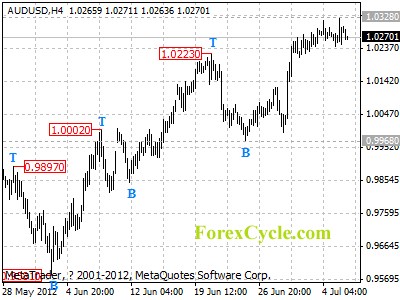By MoneyMorning.com.au
Years ago I read The Great Depression by Lionel Robbins. He was an eminent British economist who took over the chair of the London School of Economics in 1929. A young Friedrich A. Hayek was one of his first appointments. Having experienced the Great Depression, he wrote about it without the benefit of hindsight or new economic theories. He published his work in 1934.
For some reason, a particular part of the book stuck with me. It was the part about Austria being the unlikely source of the real crisis in 1931. Up until the collapse of the Kredit Anstalt bank in that year, the world thought it was recovering from the 1929/30 stock market slump. In fact, it was just the beginning.
That in itself wasn’t a revelation. It was more in the language used by Robbins to describe Austria’s implosion. It fascinated me. Perhaps because when I read it I knew that same thing was happening again.
I’ll explain the modern day link, and what it means for Australia, in a moment. But first, a few snippets from the book:
‘Throughout the years since the war, the inhabitants of the Republic of Austria had been gradually consuming their capital…the expenditure of the Viennese municipality on its housing programme alone since the Armistice exceeded the total value of the capital of all Austrian manufacturing joint-stock companies.’
‘One by one, the financial houses in Vienna put up their shutters. The slump intensified the capital consumption. Early in May 1931, the Kredit Anstalt, which had taken over the bad debts of its predecessors, announced that it could not meet its liabilities.
The actual smash is sometimes attributed to the political tension aroused by the untimely proposals for an economic Anschluss between Germany and Austria. Whether this is so or not, there can be no doubt that the ultimate cause of the difficulty was the capital consumption of the years which had preceded it.’
The Danger of Low Interest Rates
The collapse of the Austrian banks started a domino effect that reverberated around the world. It was the start of the Great Depression.
I’ve been thinking a lot about the effect of ultra-low government interest rates around the world. As the financial crisis intensifies, capital flows into government coffers. I should say some government coffers. No one wants to give Greece a cent, but investors are happy to hand hundreds of billions to the US, UK, Japanese, and German governments, to name a few. Even Australia’s government can borrow for 10 years at less than 3%.
The thing is, governments consume capital. They do not produce anything. The more that private capital flees to the ‘safety’ of government bonds, the more that capital gets ‘consumed’ by the government.
How long can this go on?
Well, things have certainly changed since the 1930s. Central banks now openly monetise the debt created by governments. Government borrowing (and spending) requirements are so huge central banks need to print money to help them finance their deficits.
Bizarrely, this act ‘creates’ capital.
Let me explain.
Central Banks Warping the System
Capital in the true sense of the word is accumulated savings. That is, an individual accumulates savings through hard work and consuming less than he or she produces.
In contrast, central banks create savings — or the appearance of savings — by printing money. They do this by buying a government bond with newly created cash. What they’re actually doing is taking a debt security out of the system and replacing it with an asset — money.
Someone in the system holds that money. If they ‘save’ it, it becomes a part of their capital. And they may even choose to buy government debt with that capital. That’s how a central bank can ‘create capital’ for the government to consume.
But it’s not real capital. It’s not the product of ingenuity and hard work. This has major implications for the global economy. The production of fake capital gives the impression of plentiful savings, which keeps interest rates low. Put another way, a low rate of interest is the result of an excess of money in an economy…itself the product of excess savings.
But in this instance, it’s the central banks who have manufactured the ‘savings‘.
The ‘consumer’ economies of the West (the adjective says it all) consumed a great majority of their capital prior to the credit bubble bust in 2008. To replace that bubble, governments are stepping in to fulfil the role of consumer of last resort. And to help them out, central banks produce fake capital for the governments to spend.
In Austria in the 1930s, the evaporation of real capital led to collapse. 80 years on, in a globalised world where the government/central bank/bank nexus seems unbreakable, it will lead — eventually — to currency crises, bond market meltdowns and soaring inflation.
This is a story for 2013 and beyond. And because Australia is an importer of capital, it’s a story that will have a major impact on your investments.
Greg Canavan
Editor, Sound Money. Sound Investments.
From the Archives…
The Hard Lesson of a Stock Trader: No Pain, No Gain
2012-06-29 – Kris Sayce
How Gold Prices Look Set to Climb As Banks Crumble
2012-06-28 – Peter Krauth
‘Big Wednesday’ For the Aussie Dollar
2012-06-27 – Dr. Alex Cowie
Three Reasons Why Silver Could Take Off in 2012
2012-06-26 – Dr. Alex Cowie
Who is Winning the Battle Between the Bulls and Bears?
2012-06-25 – Kris Sayce

The Austrian Banking Collapse That Predicts Trouble For Australia

